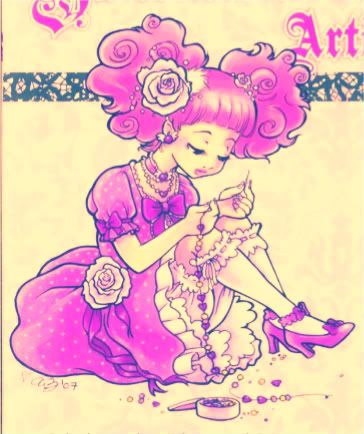
I've been a little obsessed lately witht he whole Lolita look in Japan so I delved a bit into its history. Hope you enjoy!
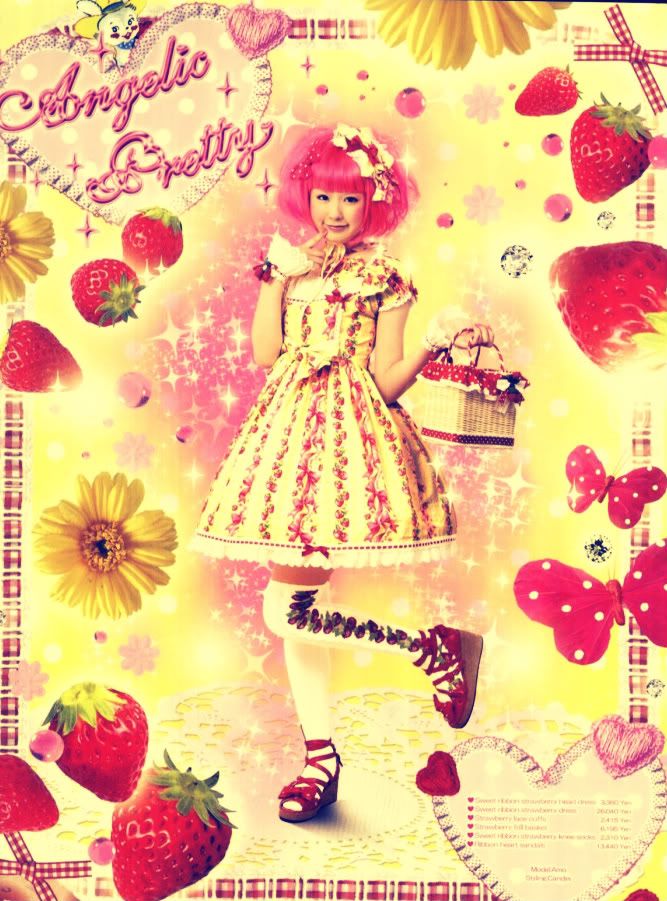
In the late 1990s the new subculture called Lolita began to emerge and is one of the most popular styles found and created in the Harajuku area of Japan Girls, who want to all mostly look like the image of a Victorian doll, which is predominant in the culture, usually wear the Lolita style and subculture known for its detailed look.Lolita began in Harajuku, Tokyo in the 1980s when Omotesando and Takeshita-dori, streets in the Harajuku district, were closed to traffic on Sundays. The closing of the area allowed for young people to gather in Yoyogi Park and the surrounding streets to listen to rock music performances, shop and simply spend time among other young people and their friends. Young people and street performers started appearing in wild, unconventional outfits, which gradually developed into recognizable styles such as lolita, gyaru or kogal, decora and ganguro. These styles were catalogued by a street photographer, Shoichi Aoki, in his magazines STREET, started in 1985, and FRUiTS, started in 1997 and photos from FRUiTS have been released as a book and toured both Australia and New Zealand as a photography exhibition, allowing Westerners a glimpse of this “grass roots” Japanese street fashion movement. Lolita fashion was popularised with the establishment of brands such as Baby, The Stars Shine Bright in 1988 and Manifesteange Metamorphose Temps de Fille in 1993. Other brands include Angelic Pretty, Innocent World and Mary Magdalene. While most brands cater to the Japanese market, the advent of Western interest in the lolita subculture has meant that some brands have begun selling to Northern American and other Western countries; some brands such as Metamorphose have developed English-language websites to cater to this interest. Primarily, however, brands still aim their clothing at Japanese girls in their teens to mid-twenties.
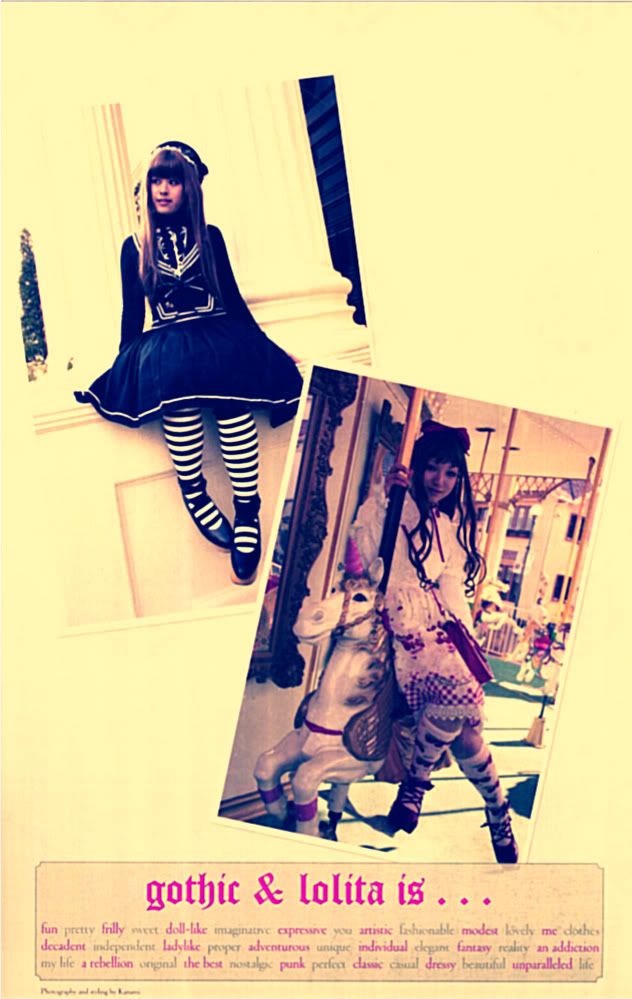
The clothing is inspired mainly by the Rococo and Victorian eras of fashion, and covers a large group of different sub-styles. Mostly females wear the Lolita look, as there is no male counterpart of Lolita. Men who want to look like Lolitas often turn to Ouji, a unisex fashion, worn by both men and women, related to Lolita, or Japanese gothic fashion . Also, Cross-dressing males, known as brolitas in the western part of the world, exist.
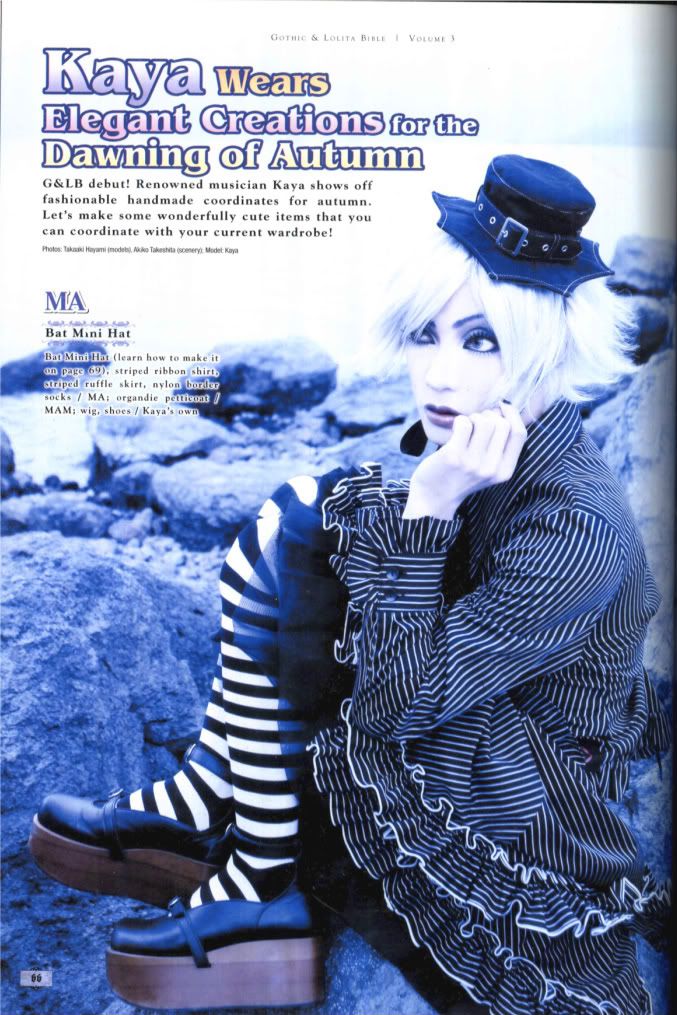
The origin of the name Lolita has been left unconfirmed, but it may be from wasei-eigo, Japanese pseudo-anglicisms. From 2000 to present, Lolita fashion has undergone an extensive metamorphosis. Early designs were rather simple, and often in the now infamous black and white color scheme. Gothic, Kuro and Shiro were incredibly popular, and Ama Lolita was very toned down. Up to 2005, clothing prints were relatively rare, and the few that existed consisted of simple motifs. During 2006, the brand Angelic Pretty introduced the beginning of the Ama Lolita style as it looks today. The prints got more intricate and detailed, floral prints became more rare. The style changed from a more classic look, to a more childish and cute over-the-top look. Ama Lolita is presently the most popular Lolita style.
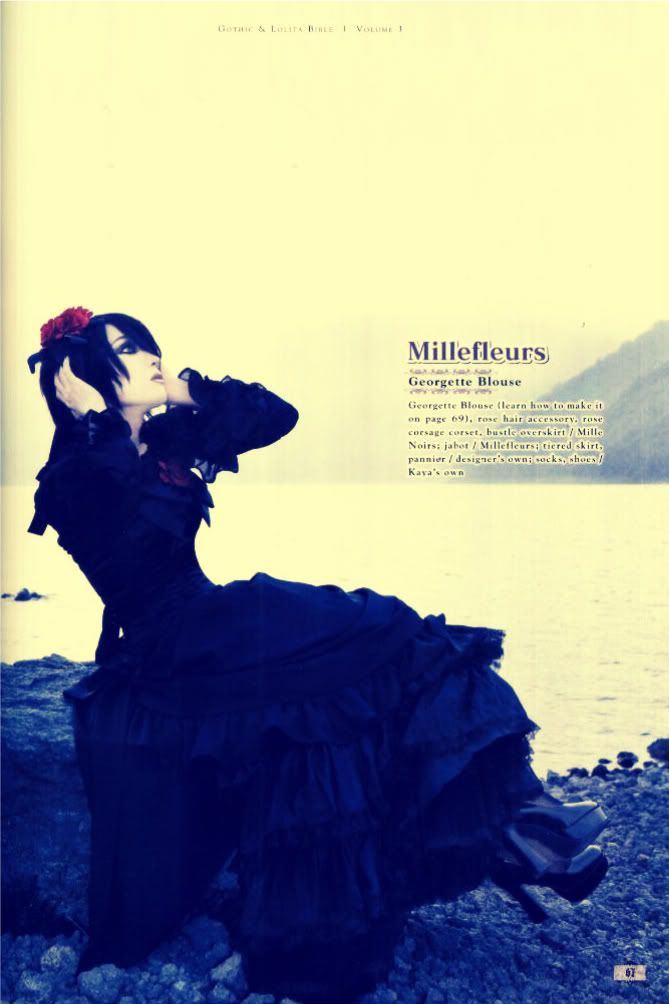
The Lolita style was influenced by music, and inspired by designers like Vivenne Westwood, Jean Paul Gaultier, the movie Alice in Wonderland, and Japanese anime. It is the collaboration of all of these influences that completes the Lolita look. There are a few different types of Lolita fashion that all have slightly different implications and appearance. Many people try to decipher the meaning of the style but are really unaware of what the Lolita wearers are portraying. People make it out to be much more than it really is.

In Japan, a band called Dir En Grey helped to spread the Lolita style. They are a “bijuaru-kei rokko bando” which in Japanese means, “visual-type rock band”. This metal music helps to describe the tone of the style. American rock star Marilyn Manson is a fan of H. Naoto, the designer of the Lolita style, and when he toured in Japan, Lolita clothing sales rose five times the normal amount. Just seeing Marilyn Manson’s band influenced people to buy the style. His style and genre of music are similar to that of the Lolita fashion and therefore helps to influence more people to buy it. There are a couple types of Lolita styles; Ama Lolita and Gothic Lolita. Ama means “sweet” in Japan and is the more innocent and girlie Lolita style, whereas Gothic Lolita emphasizes more elegant and grown up ways. Ama Lolitas use more pastel colors and whites and have enhance the look with ribbons and bows. Gothic lolitas use black and white with occasional red and were inspired by Victorian clothing, mainly the Victorian mourning dress. Gothic lolitas have two different styles; knee length skirts that are frillier and girly and full-length skirts made from velvet and brocade and are considered more luxurious and grown up. Both ama and gothic lolitas tend to carry around dolls or stuffed animals to further enhance the look of innocence and specifically in Japan, they both have knee high socks incorporated in the look.

A common misconception of the Lolita style, is that they refer to the book by Vladimir Nabokov, “Lolita”, about a man who is obsessed and sexually involved with a 12 year old girl. People believe the Ama Lolita style portrays sexuality or is a “reflection of men’s sexual desires”. Lolita style is worn because it is an expression of one’s true self. People who wear Lolita fashion wear it to distinguish themselves from the masses of people and like to identify themselves by the unique clothing. There is no larger message of strife or anxiety or any political message revealed. As designer H. Naoto, who started the Lolita fashion, says, “It is simply a style”. In fact, the Lolita subculture tends to be worn by those who behave themselves at home and school and are not rebellious in ways other than fashion.

Many people also tend to see Lolita fashion as coming about because of cultural angst during the economic insecurities during the 1990’s. In a way, these people are right simply because Japanese were longing for peace and happiness during the recession and turned to a style of clothing that let them escape their reality. Lolita fashion emphasizes a desire for simpler times but also relies on the influences of Western Literature to suggest a more innocent time before contact with the West. It’s a nostalgic style based on a fictional past that Lolita consumers would have liked to have. In the current world, there are many uncertainties for Japanese; for example, it is hard for them to find jobs so many end up living with their parents until they are in their late 30’s. The Lolita style allows these people relief and to dream of a more stable and beautiful world than the one they live in. Those who wear Lolita fashion are automatically a part of a network of like-minded people and are accepted by people that aren’t mainstream. These people get the benefits of rebelling against traditional expectations of society while having a supportive community base.
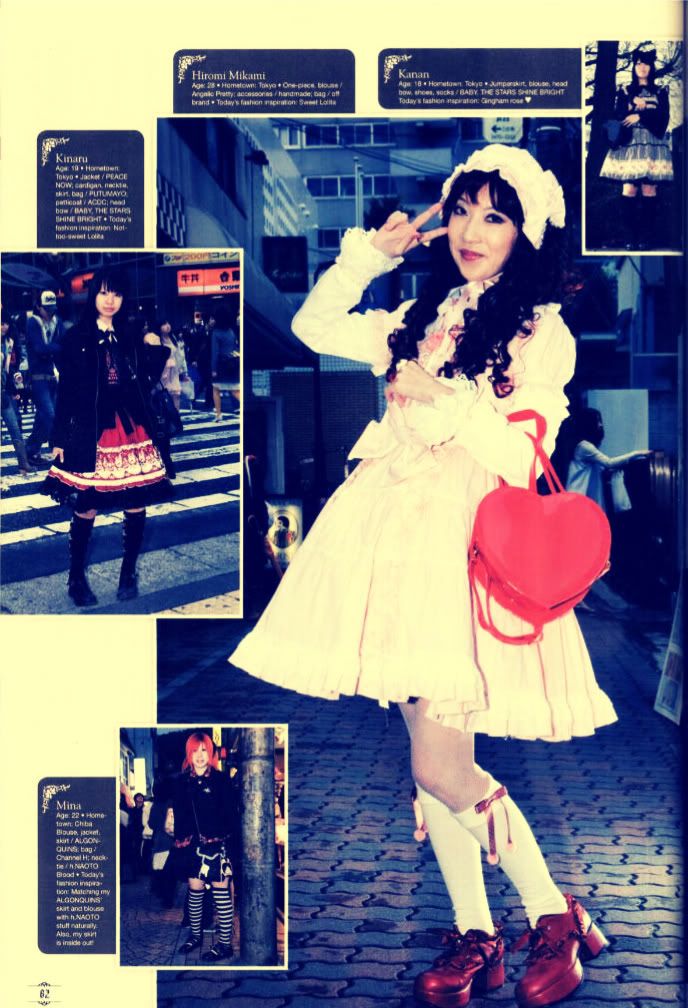
The Lolita style is composed of many different parts and can make for a complicated look. One type of Lolita is the Kuro Lolita, a style that is comprised only of clothing and accessories that are black, even their hair is dyed black or a dark shade of brown. Another type is a Shiro Lolita, a style comprised only of clothing and accessories that are white; and these Lolitas tend to have light hair color, mainly blonde.

There are many different types of headwear that are the beginning piece of each Lolita’s outfit. Beginning with the alternate types of head wear, the staple of head wear for Lolitas is called a headdress, which is a rectangular or circular hair accessory that ties under the chin with ribbon. The most basic type of headdress is the bonnet. A bonnet is a hat of cloth or straw with a large brim, held in place by ribbons tied under the chin . Similar to the bonnet is the half-bonnet, which is a bonnet with no back; it looks more like a headdress with a brim . The simplest of all Lolita headdress styles is called the Kachuusha, a headband, most often with a big Alice in Wonderland bow on top.
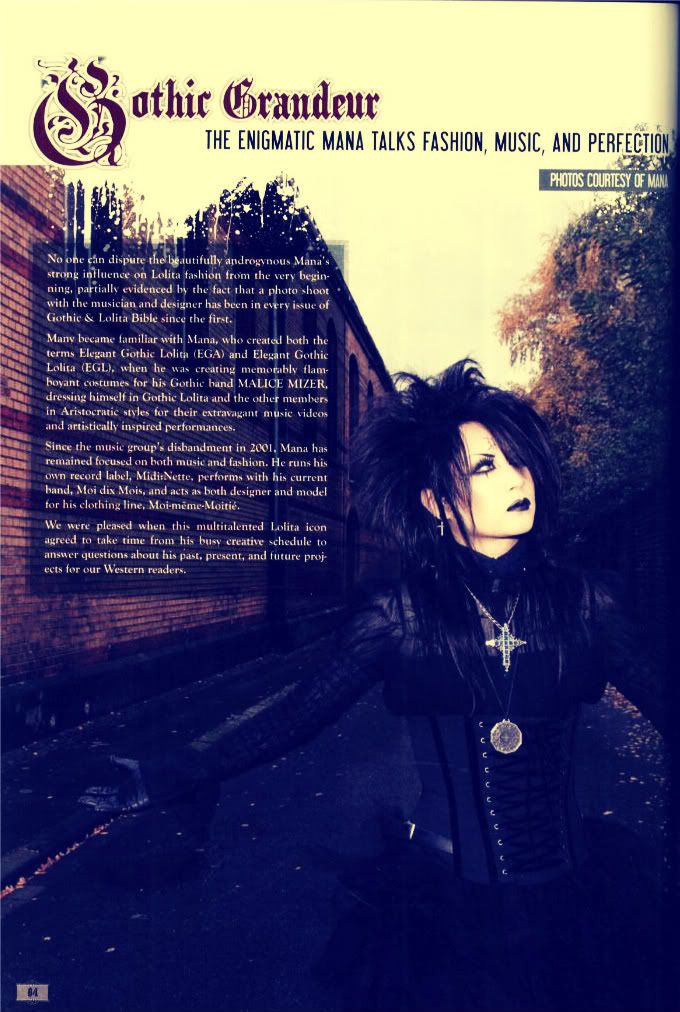
Next, one should examine the shirts and blouses that make up the Lolita fashion style. Like the bonnet, a blouse is the commonly worn among Lolitas. A blouse is a feminine style of up formal shirt made of woven fabric. If one is going for laid back look a Lolita may wear a cutsew, which is a slightly more casual Lolita blouse made of jersey/knit fabric. If a Lolita wishes to have a more upscale look they can don a jabot: an ornamental cascade of ruffles or frills down the front of a shirt, blouse, or dress.
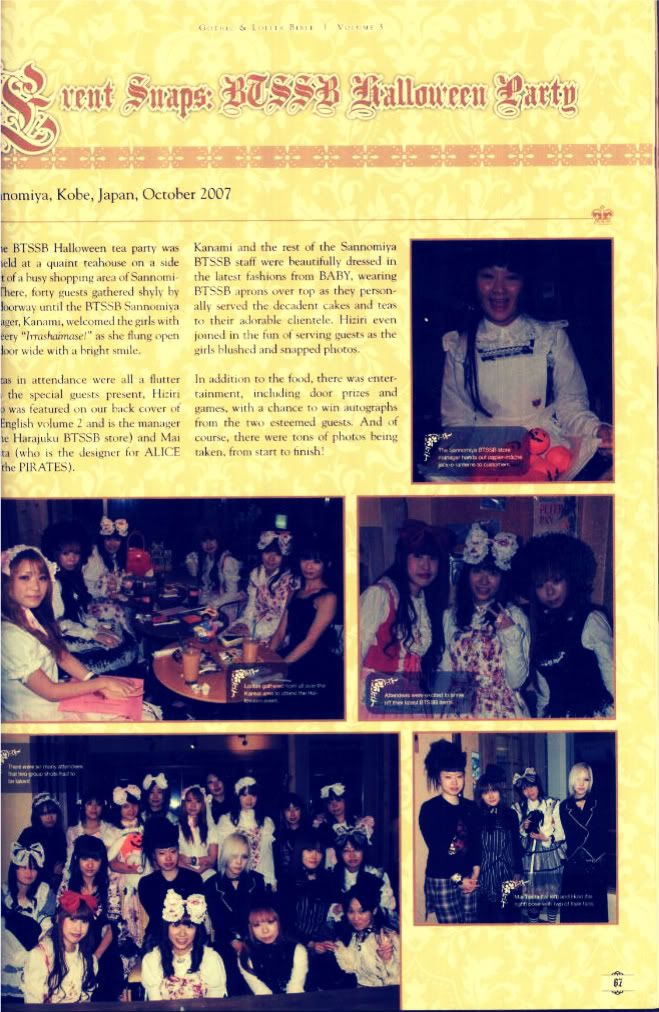
The third component of Lolita style is the dresses and skirts. Most Lolitas will wear a bloomer, which are loose shorts gathered at the bottom and worn under a skirt to protect modesty. Another item of clothing worn under skirts is pannier or petticoat, which is usually made of tulle and worn to give a skirt volume . There are two types of dresses primarily worn by Lolitas, a jsk or jumper skirt and an op or one piece. The jsk is a sleeveless Lolita dress usually worn with a blouse. An op is a Lolita dress that has sleeves .
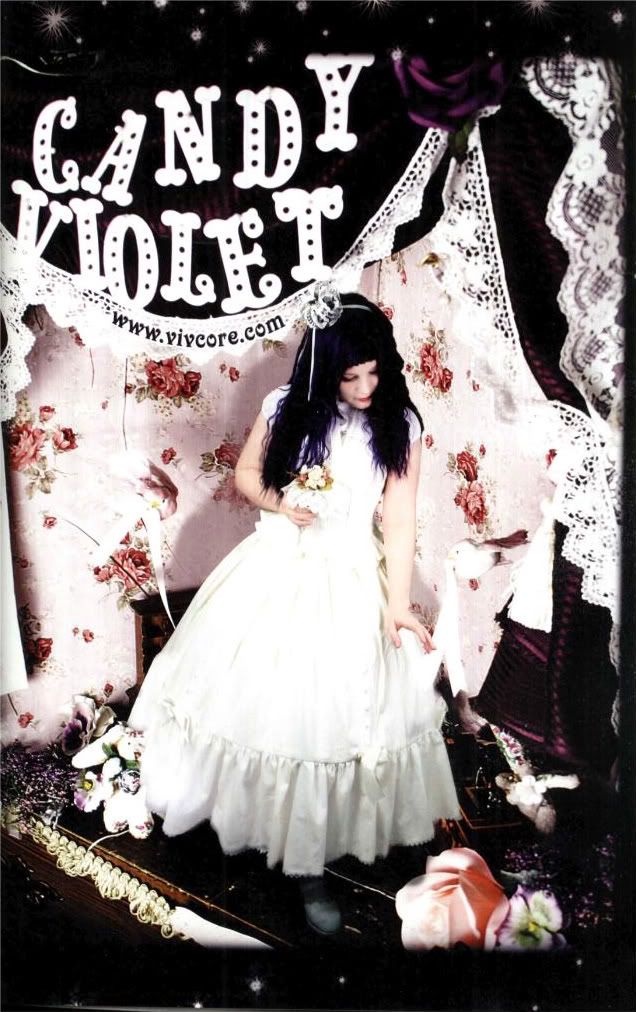
The final part of the Lolita style is the shoes and accessories. One of the more popular style shoes worn by Lolitas is called a rocking horse shoe. They are a pair of shoes that are very tall, with a heel made from wood or cork with a notch taken out of the back, made popular by Vivienne Westwood. When it comes to accessories, sock toppers and wrist cuffs are commonly worn. A sock topper is a decoration that sits at the top of one’s sock usually made from ribbon and lace; and a wrist cuff is like a bracelet made from lace.

Gothic Lolita on the left seen wearing white lace cotton Jabot underneath a black cotton Jsk with white lace tights and lace up ballet shoes. Sweet Lolita on the left seen wearing frilly pink, lace jsk with frilly pink lace jacket, white lace petticoat, and patterned tights with pick doll-like shoes.
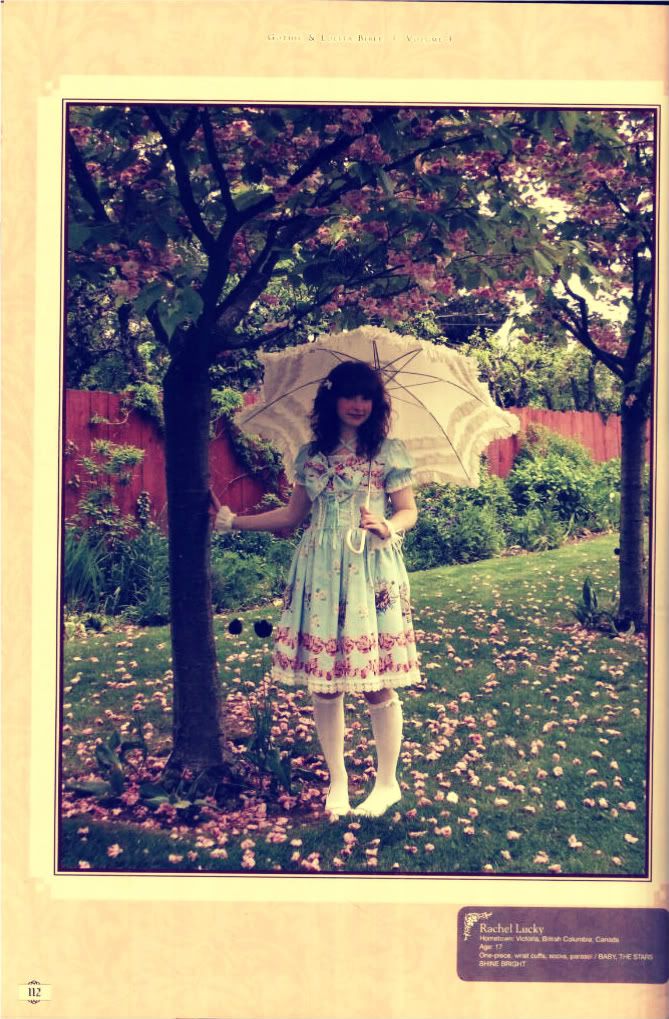
In Japan, the Lolita style of fashion led by mostly young groups of people greatly influences fashion trends within their communities. The emergence of this style of fashion also known as the “CosPlay Movement” reflects the young people’s internal selves that many find hard to express verbally. The Lolita style provides its group with entertainment, fun, and also more of a sub-cultural community. This distinct and unique style of fashion has put an end to the old and traditional western views of Japanese styles.
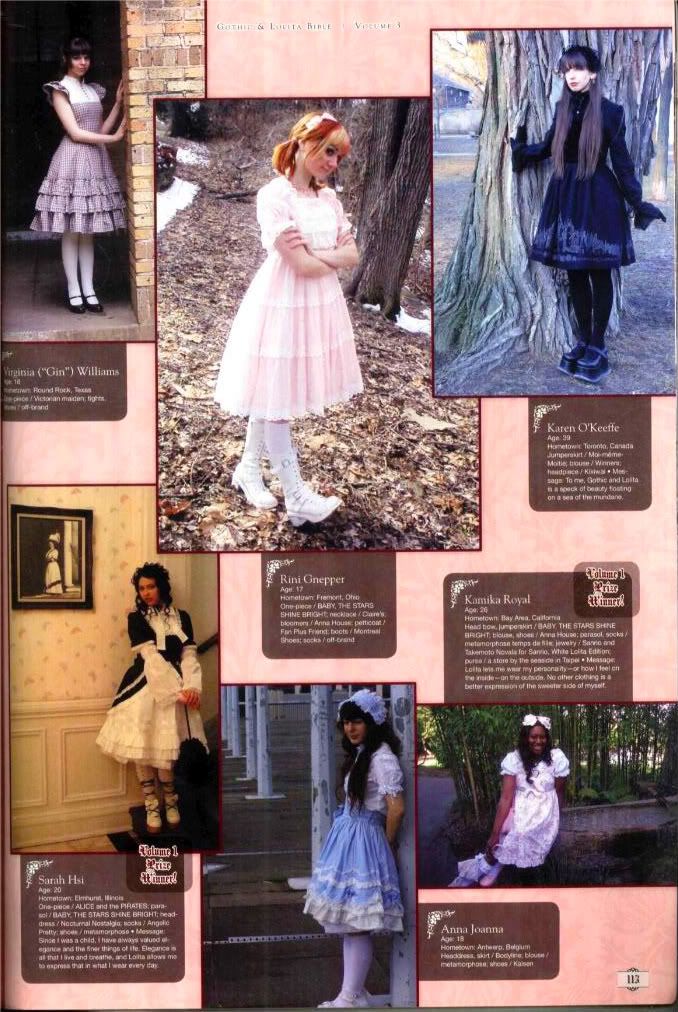
The Lolita members are bound together by their stylistic expression and have created a subcultural community around that fun, child-like expression of themselves.They communicate face-to-face or online and make handmade Lolitas. They have also created their own slang that is not understood by others . Membership to a group of Lolitas is voluntary and many of the Lolitas often express that they fell like a child when they wear the Lolitas style It is true that Lolita and gothic originated from western world but Lolitas have not been concerned with assimilating western culture.

All Images: Gothic Lolita Bible
Love,
Ashley
Where I got all my information from and where you can find out more about Lolitas:
About the Fashion. Retrirved April 5, 2011 from here
Anatomy of a Lolita Outfit. Retrieved April 6, 2011 from here
Hirano, K. (Oct 21, 2004). LOLI GOTH POP. WWD, p.62S. Retrieved April 10, 2011, from Academic OneFile via Gale: here
Kawaruma, Y., Mears, P., Narumi, H., & Steele, V. (2010). Japan Fashion Now.
New York: Fashion Institute of Technology.
Lolita Culture. Retrieved April 5, 2011 from here
Tidwell, Christy. May . Street and Youth Fashion in Japan. In Berg Encyclopedia of World Dress and Fashion: Volume 6 – East Asia Retrieved 10 Apr. 2011, from here











